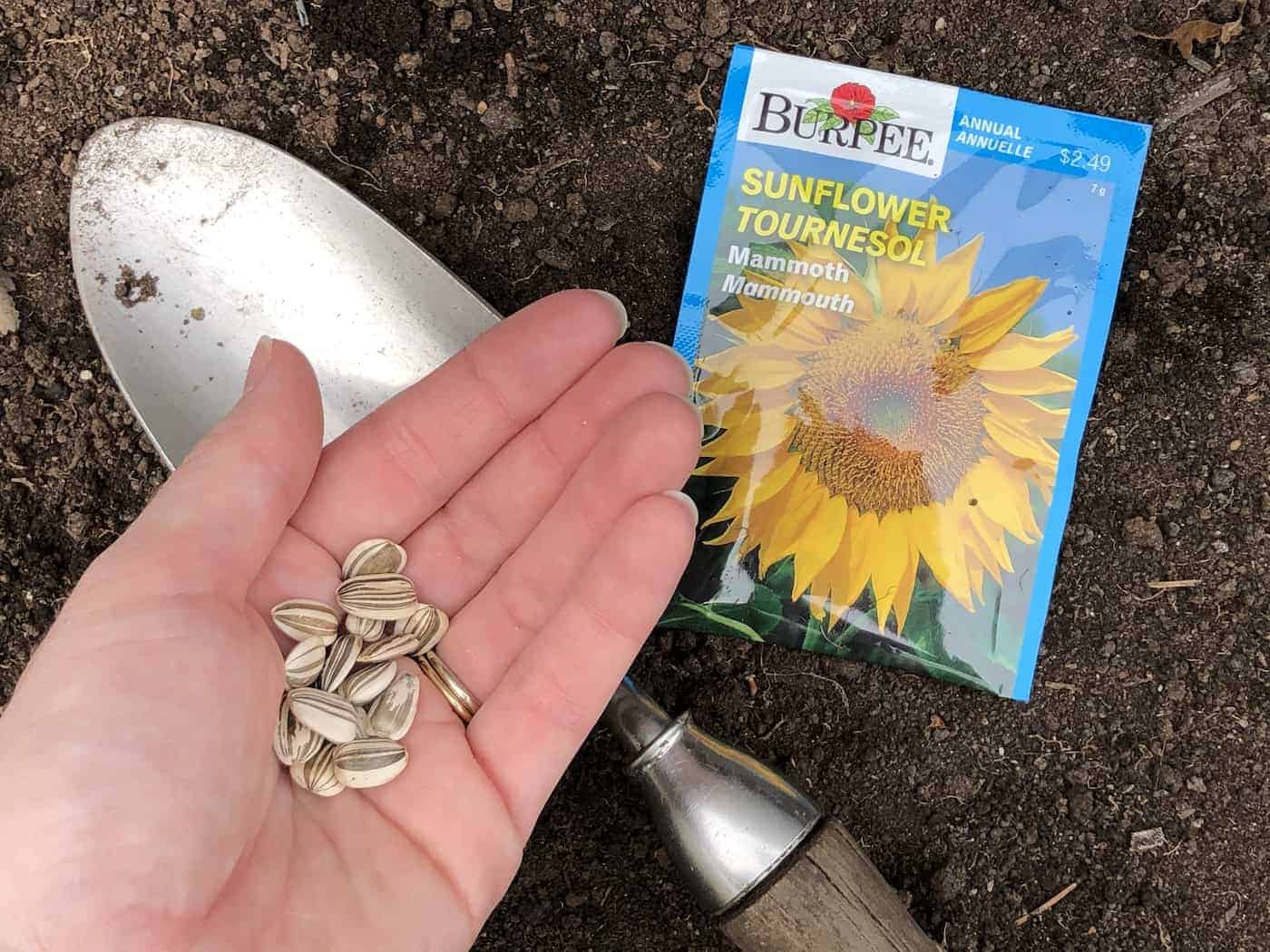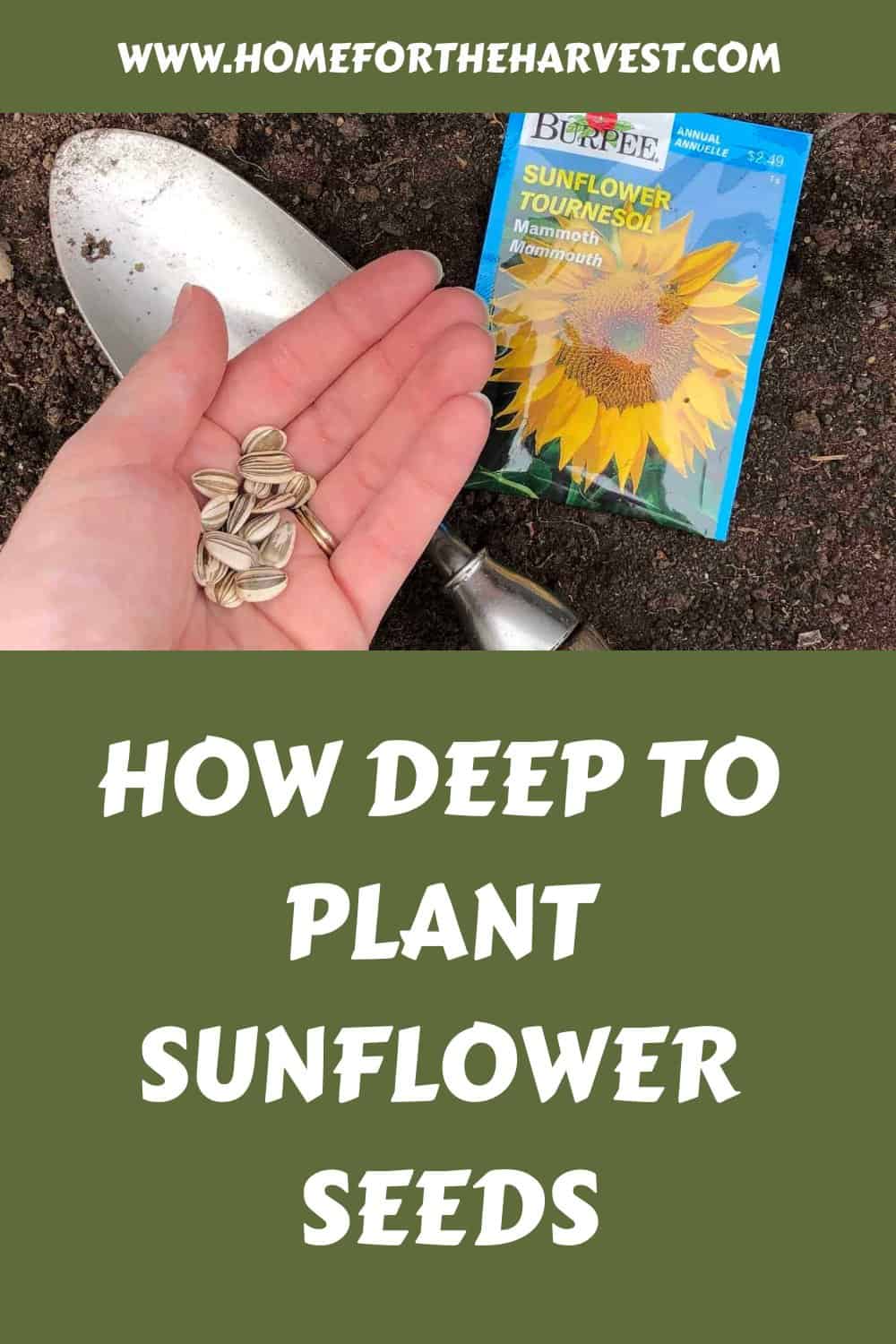Most sunflower seeds are sown between a 1/2-inch and 1-inch deep. Varieties with small seeds, like many dwarf and florist varieties, do well at the shallower range, while the larger seeds of tall and giant-head varieties should be planted deeper. Plant seeds a little deeper in sandy soil than in types with more clay/silt, as it tends to dry out faster.
Sunflower seeds are most commonly planted directly in the soil outdoors, as starting the seedlings indoors does not add much of a head start.
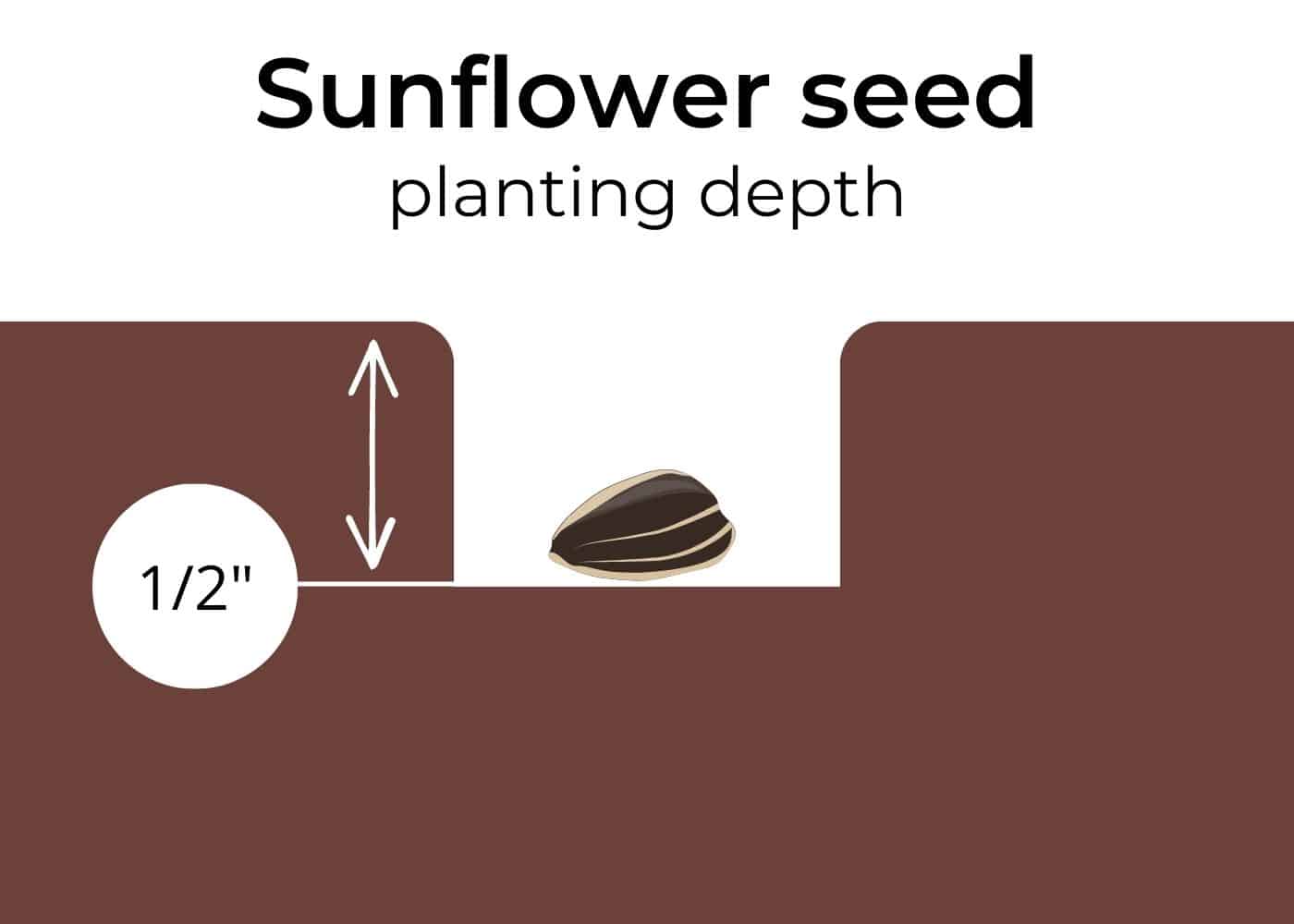
How deep to plant sunflower seeds
Sunflowers (Helianthus annuus) are a beautiful and popular plant known for their bright, cheerful blooms. Most sunflower seeds should be planted about 1/2 inch to 1 inch deep, although some varieties may require deeper planting.
The picture below shows the size of sunflower seeds of different varieties, starting with tiny dwarf sunflower seeds on the left and progressing up to seeds for giant sunflowers on the right. Giant sunflower seeds need to be planted a bit deeper than tiny sunflower seeds. This is so that the bigger seeds are protected from drying out, as they need to absorb a lot of water to germinate.
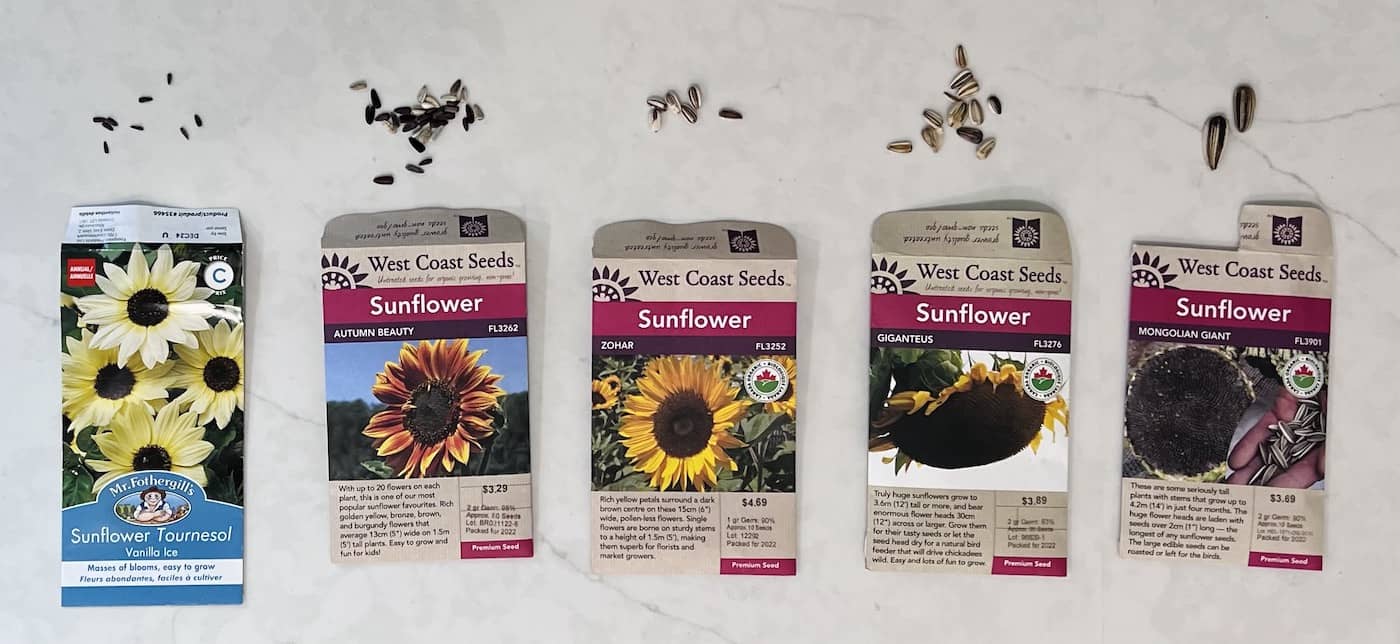
Different planting depths
Sunflowers that grow to a maximum of under about 8 feet tall are generally planted a 1/2 inch deep:
- Dwarf sunflower varieties (like Teddy Bear): 1/2 inch deep
- Florist sunflower varieties (like ProCut): 1/2 inch deep
- Branching ornamentals (like Autumn Beauty): 1/2 inch deep
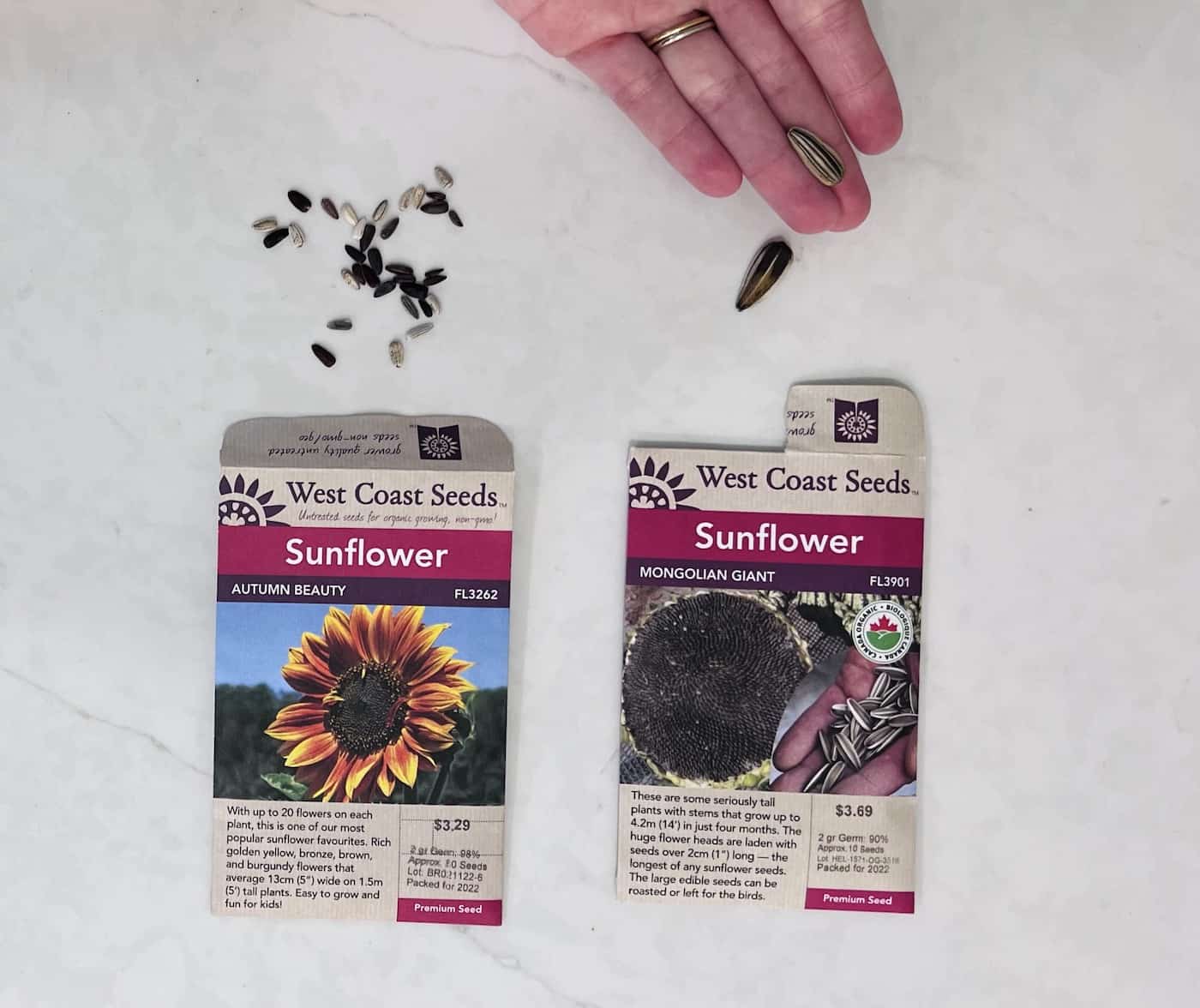
Sunflowers that grow 8+ feet tall have larger seeds that are usually planted at more like 1/2 inch to 1 inch deep:
- Tall sunflowers (like Mongolian Giant): 1/2 inch to 1 inch deep
- Sunflowers for roasting seeds (like Mammoth): 1/2 inch to 1 inch deep
The seeds are generally planted a bit deeper where the soil, such as sandy soil, dries out quickly. They may also need to be planted a bit deeper in hot climates if irrigation is limited.
A good rule of thumb is to plant seeds in a hole that is about three times as deep as the size of the seed. This can be a bit tricky to picture for long, skinny seeds, but it is helpful nonetheless.
Sunflower seeds are not commonly planted more than about an inch deep. This is because the seedlings take longer to emerge. Germination may be hindered, and early vegetative growth may be delayed as the seedling struggles to initiate photosynthesis.
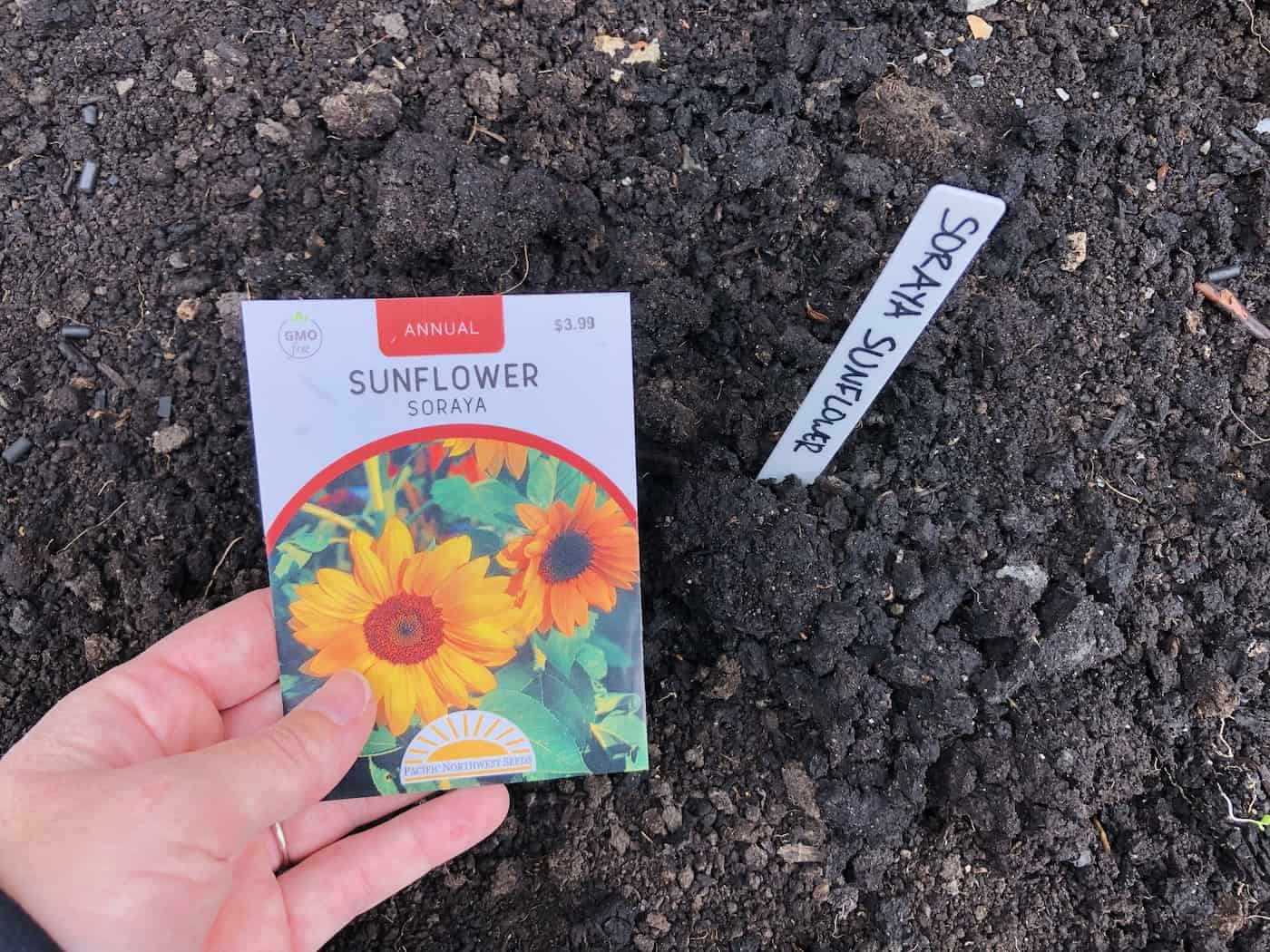
How to plant sunflower seeds
To plant sunflower seeds, you’ll need to prepare a sunny spot in your garden with well-draining soil. After loosening the soil, create a small hole or furrow with a trowel or your finger. Place the seed in the hole and gently cover it with soil, patting it down gently to ensure good soil contact. Water the soil well to help the seed germinate.
It’s a good idea to plant sunflower seeds in groups or clusters rather than individual seeds to help them grow more uniformly. You can also start sunflower seeds indoors and then transplant them to the garden once they have a few sets of leaves. This can be a good option if you’re starting your seeds earlier in the season and want to give them a head start.
While some tiny seeds need the soil to be kept consistently moist, plants with larger seeds, like sunflowers, tend to do best when the soil surface dries slightly between watering. This can control the fungi that cause damping off, killing young seedlings. So let the very top of the soil dry out a bit between waterings if you can.
Sunflower seeds usually germinate within a week in warm soil. The ideal germination temperature of the soil for sunflower seeds is about 77°F (25°C), but most varieties can germinate at soil temperatures as low as about 40°F (5°C) – the seeds will just take much longer (2+ weeks) to germinate in cold soil.
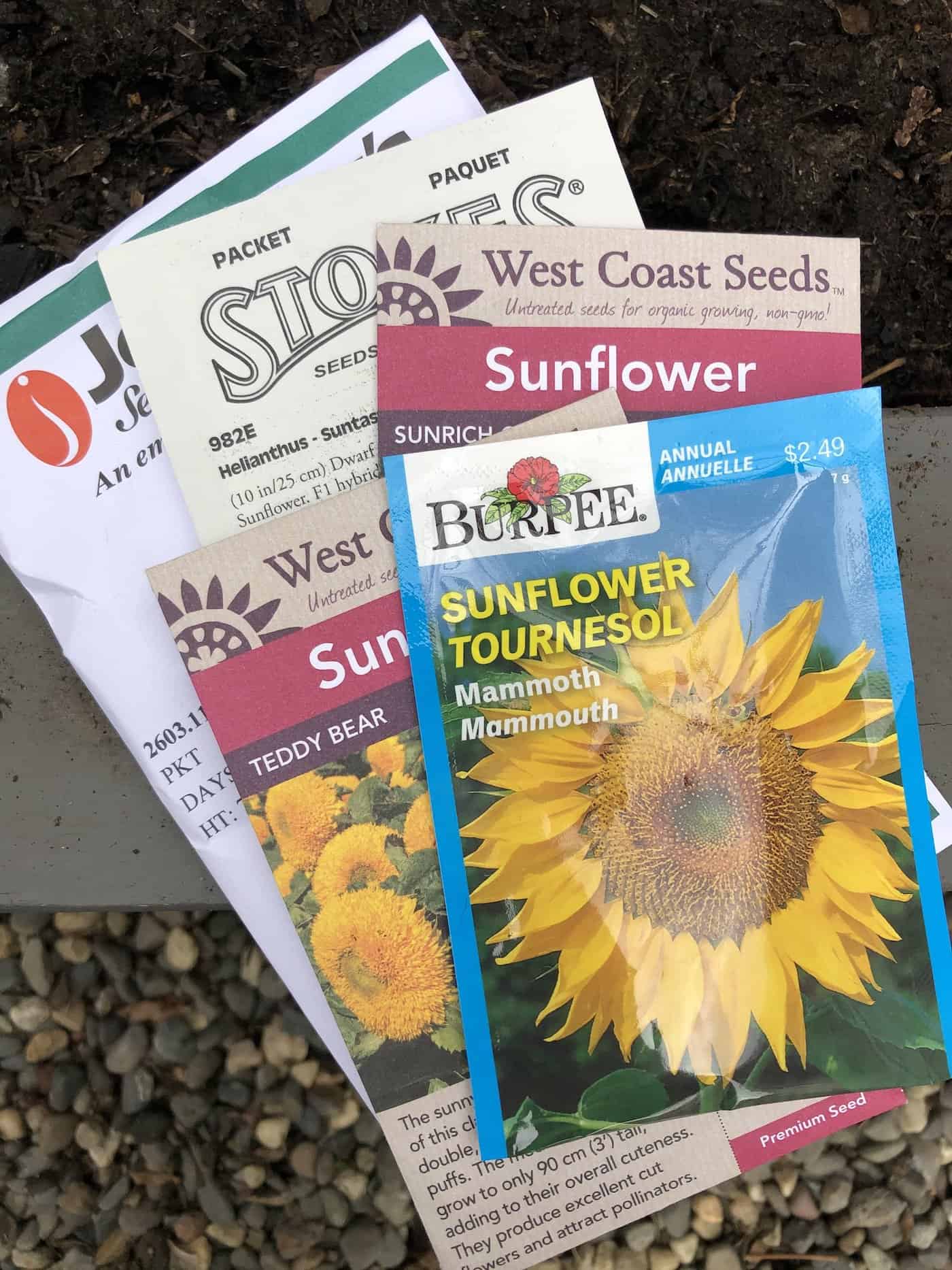
Caring for sunflowers in the garden
As your sunflowers grow, be sure to water them regularly and provide them with plenty of sunlight. Sunflowers are known for their ability to follow the sun, so be sure to plant them in a spot that gets plenty of sunlight throughout the day.
By following these tips and planting your sunflower seeds at the right depth, you’ll be on your way to enjoying beautiful, bright sunflowers in your garden. So, it’s important to plant sunflower seeds at the right depth to give them the best chance of growing into healthy, beautiful plants.
Planting sunflower seeds for microgreens
Start by purchasing sunflower seeds specifically meant for growing microgreens. These can be found at a local garden center or online.
Next, you’ll need to prepare your growing tray or container. You can use a plastic or wooden tray or even a recycled container with drainage holes. Fill the tray with a seedling mix or a mixture of peat moss and vermiculite.
Spread a thin layer of sunflower seeds over the surface of the soil. You don’t need to cover the seeds with soil, as they will sprout on top of the soil. We are able to keep a close eye on soil moisture when growing microgreens (as opposed to sunflowers planted outdoors), so it’s okay just to place them on the soil surface as long as they’re kept in a moist environment.
Water the seeds lightly with a spray bottle or watering can. Be sure to keep the soil moist but not waterlogged or muddy, as this can cause the seeds to rot.
Place the tray in a warm, sunny location and cover it with a clear plastic lid or wrap to create a greenhouse effect. This will help the seeds germinate more quickly. You also won’t have to water it all the time.
After about 7-14 days, you should start to see the sunflower microgreens sprouting. They are ready to harvest once they reach a height of about 2 inches.
Use scissors to cut them just above the soil line to harvest your sunflower microgreens. Wash and dry the microgreens, then store them in a plastic bag in the refrigerator until you’re ready to use them.


